OK. So we all know that Death Valley is dry, arid and desert-like, that there is narry a plant growing and that you’re more likely to see a coyote dropping rocks off cliffs than you are to see a blackbird. (Though as it happens the roadrunner is a common enough bird in these parts – even if we haven’t seen one!) But before you trek out from the Ranch at Furnace Creek, stop off at the on-site Borax Museum, a wealth of information and a fascinating insight into Death Valley then and now.
To our amazement, it turns out that Death Valley was once a gigantic lake with tropical forest growth and plenty of flora and fauna. We’re going back a few years, mind (like, millions). Most contemporary accounts document the area from around 1850, when coach loads of gold prospectors stumbled into the valley by mistake and promptly proceeded to regret it. They didn’t find a great deal of gold, though the mineral they found that could be exploited was Borax – still a fundamental component of soap, pyrex and glass, and still a major US export. It’s quite amazing to read how these pioneers not only managed to make this hostile landscape habitable, but also managed to forge thriving industries, with mines, rail connections and mapping projects to develop the infrastructure of this uninhabitable environment. Sadly, much of the prospecting yielded very little, so mining towns blossomed and then withered, leaving a host of deserted ghost towns in the desert, and just a couple of existing communities, one of which is the Ranch at Furnace Creek.
Another surprise is that Furnace Creek itself was established as a leisure resort as long ago as 1940, as lots of the memorabilia, photos and paraphernalia dotted about the complex attests. Back then you could order New York Steak at the restaurant for a dollar, watch movies for an evening’s entertainment, swim in the hot spring pool, and even ride the narrow gauge railway to the most local Borax mine as part of your itinerary. Some of those delights are no longer available (and the New York Steak is a great deal more spenny, though presumably it’s a fresh batch of meat). However, what is available is a wealth of stunning photo opportunities including the lowest point in America at Badwater, the amazing colours of the cliffs around the Artist’s Palette, and the striking scenery of the Golden Canyon. All within an hour’s drive. So we lathered ourselves with suncream, got in the car, and ventured out to explore the delights. A word of advice: this might be the point to make sure your camera gear is top notch; ours isn’t, so what you see here is snapped on smart phones and lacking photographic aplomb. Even so, we’re sure you’ll agree that the sights of Death Valley are pretty amazing!
First, the Golden Canyon:
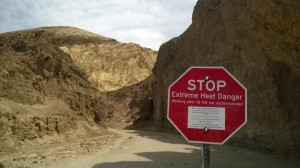
Then Badwater: the lowest point in America
And finally, the Artists’ Palette, with its extraordinary juxtapositions of colour caused by different minerals in the rock formations:

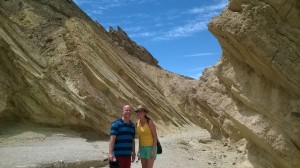

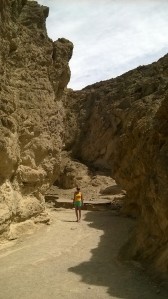

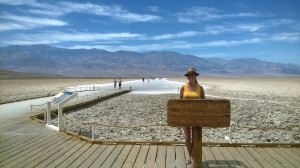
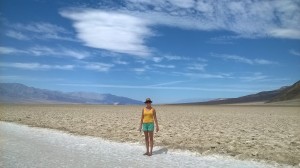
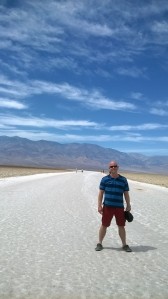
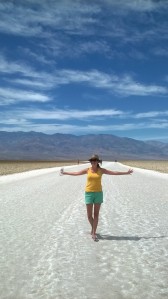
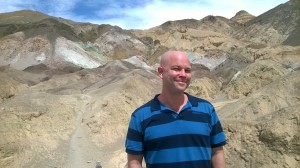
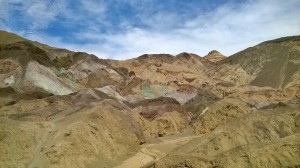
What an amazing place!! Thank you for sharing it.
LikeLike